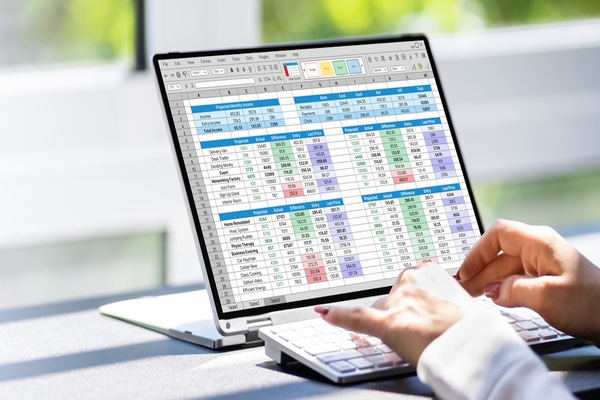What’s your returns strategy?

Tim Robinson at Blue Yonder discusses the power of data and explains what businesses can achieve through their return’s strategies
With 92% of consumers saying they would buy again from businesses that provide a great returns experience, getting the returns process right is key for building a loyal customer base and driving market growth.
However, online returns represent a major challenge for today’s e-retailers, with 63% of retailers retailers admitting it’s a significant problem for their business. In the face of rising returns rates, they’re grappling with escalating processing, sorting and re-stocking costs that eat into the bottom line. They’re also struggling to manage returns and refunds in an efficient and fast manner, which in turn impacts customer satisfaction. But that’s not the only issue.
Last year, returns fraud cost the UK retail industry an estimated £11.3 billion. In response, many leading retailers have adjusted their policies to clamp down on returns and in doing so provoked a consumer backlash.
So, how can retailers strike the right balance and deliver a seamless experience that represents a win-win for customers and their business?
Setting the strategic direction
Rather than viewing returns solely as a problem, smart retailers view returns as a rich source of data that can help them refine processes and deliver the kind of returns experience they want to offer.
For firms committed to delivering market leading customer service, maximising the ease of returns and accepting the high short-term costs associated with providing a great returns experience will be the cornerstone of their returns strategy.
Meanwhile, those that prioritise product improvement will utilise returns data to make changes that will help prevent future returns. This could involve updating product descriptions or size charts or changing packaging processes to prevent damage to items during shipping.
Ultimately, setting a returns philosophy involves determining what kind of returns experience the business wants to offer and how much it is prepared to invest in it. It also depends on being able to access accurate data that illustrates the current returns state-of-play.
Armed with these insights, retailers will be able to create a returns policy that supports business needs and run the returns process in a way that improves efficiency and cuts costs.
End-to-end control and oversight
To implement a truly efficient returns strategy the preference is to have a single point of ownership and responsibility for the entire end-to-end returns journey, from initial refund request through to restocking.
Without ownership it can prove difficult to solve point challenges in a cohesive and standardised way - something that can lead to e-commerce returns being treated differently to store returns, or returned items being sent back to overseas distribution centres for restocking. All of which adds up to an inefficient and costly returns journey.
By appointing an individual or team to oversee all relevant functions – e-commerce, retail, operations, supply chain, transport and sustainability – it becomes easier to share and analyse returns data so that process bottlenecks and opportunities for cost reduction can be identified.
Similarly, those with returns ownership will be empowered to bring together people from across the business to jointly assess challenges and implement solutions that streamline the returns process end-to-end.
Using data to optimise operations
By combining and analysing customer returns data and internal product data, retailers are able to identify return patterns that indicate where and how they need to improve product descriptions and fulfilment processes. They will also be able to make adjustments that keep their returns strategy on track.
So, if marketing is promoting a discount on a product that has high return rates it can be removed from the campaign while the buying team determines if there is a manufacturer defect or if other products are experiencing similar issues. Meanwhile, the logistics team can be alerted to expect an influx of returns to process.
By analysing data, constantly benchmarking performance and iterating the results, retailers can leverage global visibility of exactly what returns are coming in and how to continually evolve and improve their strategic decision making. For example, optimising inventory management to prioritise returns that are more likely to be resold.
Speeding up refunds and tackling fraud
Today’s digital returns platforms make it easy for customers to book their return, select a returns reason and identify how they’d like to make a return. They are also able to opt for an exchange instead of a refund and specify their preferred refund method. Meanwhile, retailers gain full visibility of their real-time returns landscape, including when items will arrive back at their sorting centres.
Utilising features like reverse tracking, retailers can keep customers updated on where their return is and when they can expect to receive their refund.
Even better, they can centrally manage and orchestrate the returns process and initiate new strategies to speed up refunds. This could include instantly issuing refunds to high value customers or customers that don’t habitually return, or offering ‘returnless’ refunds for items that cannot be resold and would cost more than the value generated by a resale to process.
When it comes to managing fraud, knowing what percentage of returns are fraudulent and what this costs the business is vital for determining which prevention strategies to prioritise. For example, only allowing labels to be generated for products that are within the returns policy in the first place.
A digital returns platform automatically creates a record of every return that is connected to order data. This ensures that warehouse teams can immediately catch discrepancies when processing items. These digital records also include customer data, which makes it easy to quickly flag specific customer accounts in cases of fraud.
Finally, a digital returns platform significantly speeds up the end-to-end returns process. This enables retailers to reduce the timeframe customers can continue to abuse returns policies down from weeks to days.
Maximising the value of returns data
Returns are an inevitable part of the shopping experience, one that retailers currently struggle to orchestrate and manage. However, by leveraging modern returns technology retailers are able to utilise powerful data insights to evolve and refine their returns strategies in line with wider business goals.
They also gain deep insights into the connections between customer profiles and their returns behaviours.
Today’s returns management solutions now make it possible to deliver a seamless and convenient experience for customers, while also intelligently protecting the business from inefficient returns processes and maximising opportunities for revenue protection and recovery.
Tim Robinson is Corporate Vice President, Returns at Blue Yonder
Main image courtesy of iStockPhoto.com and CatLane

Business Reporter Team
Most Viewed
Winston House, 3rd Floor, Units 306-309, 2-4 Dollis Park, London, N3 1HF
23-29 Hendon Lane, London, N3 1RT
020 8349 4363
© 2025, Lyonsdown Limited. Business Reporter® is a registered trademark of Lyonsdown Ltd. VAT registration number: 830519543





